I - is Another
11 - 15 October 2023
New Normal Projects
Cromwell Place, London
Cromwell Place, London
Perhaps, along with the I, estranged and freed here, in this manner, some other thing is also set free?
‘Make It New’ was the famous modernist slogan coined by Ezra Pound; but, in the twenty-first century, we have now such a glut of novelty that even the notion of ‘newness’ is old-fangled.
This exhibition showcases two artists, the Cape Town-based Ruby Swinney and the London-based Harriet Gillett, who have a concern rather with the past than the future. Who are we after all without memory, without the past, without history?
Instead, in the paintings of this exhibition, a strange image of the present is offered: not something ‘new’ but a state of indeterminate becoming, a palimpsest of a layered past. If this were a slogan, it would say, ‘make it strange, make it other’, or to follow Rimbaud, je est un autre, ‘I is an other’.
And indeed Swinney does seem to sublimate the self in her paintings. Known for her intricate oil paintings on silk canvas, and her otherworldly natural landscapes inhabited by faceless figures. Characteristically, Swinney works in monochrome building hectic shades of colour by layering the paint thinly on these luminescent, light sensitive materials. These paintings are surreal pastoral scenes, often based on Cape Town’s urban landscape and its environs, though slanted just outside of the familiar, they are also an indeterminate location.
The twilight people who inhabit these places, walk the gardens, bathe or look through the glass of the aquarium, are rendered with intricacy and detail, but are frozen in space, their presence seems vegetative, lost, fading into impalpability. They are the ones who suffuse these paintings with loss. Nonetheless all around them is this omnipotent depiction of vegetation painted with a scale and intensity that dwarf these ghostly people and make even the brutalist apartheid buildings, which so often are included on the periphery of her paintings, signifiers of a ruined and ruinous modernism.
In Swinney’s intense depiction of plant life, of trees especially, the sheer multiplicity and vagaries of their leaves, we find an expressive painting, where abstraction and emotional intensity is set free. It is through an almost personification with the foliage that they come alive, and seem almost moving on the canvas, bursting out of the confines of figurative realism.
It is telling then that Swinney’s compositions are drawn to examples of a confined nature, as seen in aquariums, water parks, public parks and private gardens: the trees in a Victorian park feel as though they might envelope the quiet bourgeois scenes of the faceless figures below. And while this is all monochrome, the chosen colour of each painting is as much a material as the paint itself. Like Cy Twombly or Rothko or Joan Mitchell, colour itself holds an enormous charge of libidinal excitation. Though these paintings are restrained in their representations, controlled in their intricacy, their silk membranes delicate and fragile, they are blasted by a hoard of colour so disarmingly laid bare at times one feels almost a breach of privacy in looking. [...]
Full text here
– Paul Celan
‘Make It New’ was the famous modernist slogan coined by Ezra Pound; but, in the twenty-first century, we have now such a glut of novelty that even the notion of ‘newness’ is old-fangled.
This exhibition showcases two artists, the Cape Town-based Ruby Swinney and the London-based Harriet Gillett, who have a concern rather with the past than the future. Who are we after all without memory, without the past, without history?
Instead, in the paintings of this exhibition, a strange image of the present is offered: not something ‘new’ but a state of indeterminate becoming, a palimpsest of a layered past. If this were a slogan, it would say, ‘make it strange, make it other’, or to follow Rimbaud, je est un autre, ‘I is an other’.
And indeed Swinney does seem to sublimate the self in her paintings. Known for her intricate oil paintings on silk canvas, and her otherworldly natural landscapes inhabited by faceless figures. Characteristically, Swinney works in monochrome building hectic shades of colour by layering the paint thinly on these luminescent, light sensitive materials. These paintings are surreal pastoral scenes, often based on Cape Town’s urban landscape and its environs, though slanted just outside of the familiar, they are also an indeterminate location.
The twilight people who inhabit these places, walk the gardens, bathe or look through the glass of the aquarium, are rendered with intricacy and detail, but are frozen in space, their presence seems vegetative, lost, fading into impalpability. They are the ones who suffuse these paintings with loss. Nonetheless all around them is this omnipotent depiction of vegetation painted with a scale and intensity that dwarf these ghostly people and make even the brutalist apartheid buildings, which so often are included on the periphery of her paintings, signifiers of a ruined and ruinous modernism.
In Swinney’s intense depiction of plant life, of trees especially, the sheer multiplicity and vagaries of their leaves, we find an expressive painting, where abstraction and emotional intensity is set free. It is through an almost personification with the foliage that they come alive, and seem almost moving on the canvas, bursting out of the confines of figurative realism.
It is telling then that Swinney’s compositions are drawn to examples of a confined nature, as seen in aquariums, water parks, public parks and private gardens: the trees in a Victorian park feel as though they might envelope the quiet bourgeois scenes of the faceless figures below. And while this is all monochrome, the chosen colour of each painting is as much a material as the paint itself. Like Cy Twombly or Rothko or Joan Mitchell, colour itself holds an enormous charge of libidinal excitation. Though these paintings are restrained in their representations, controlled in their intricacy, their silk membranes delicate and fragile, they are blasted by a hoard of colour so disarmingly laid bare at times one feels almost a breach of privacy in looking. [...]
Full text here
Text by Noah Lee Swann









Soft Water, 2023. Oil on silk. 80 x 151 x 5 cm.
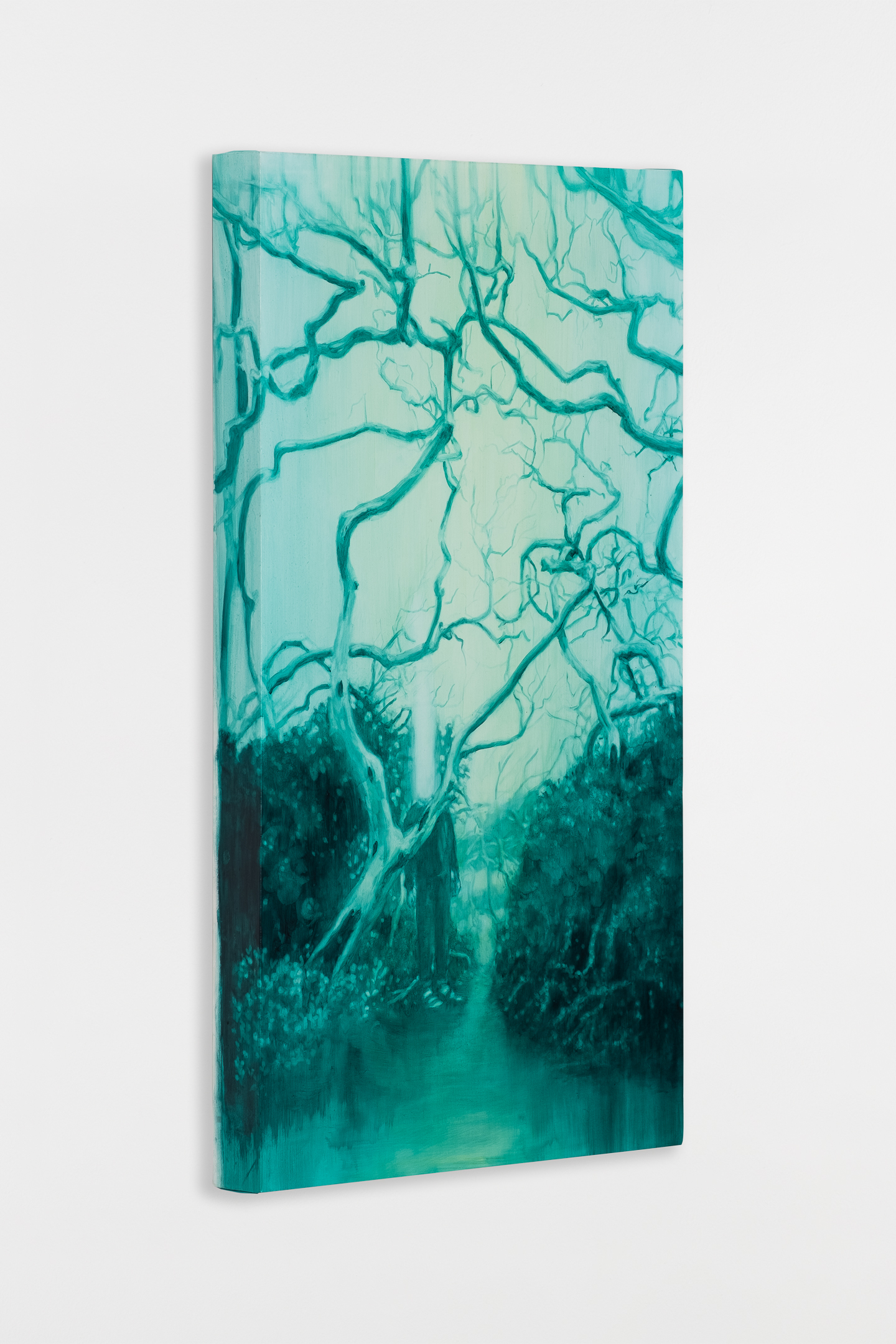
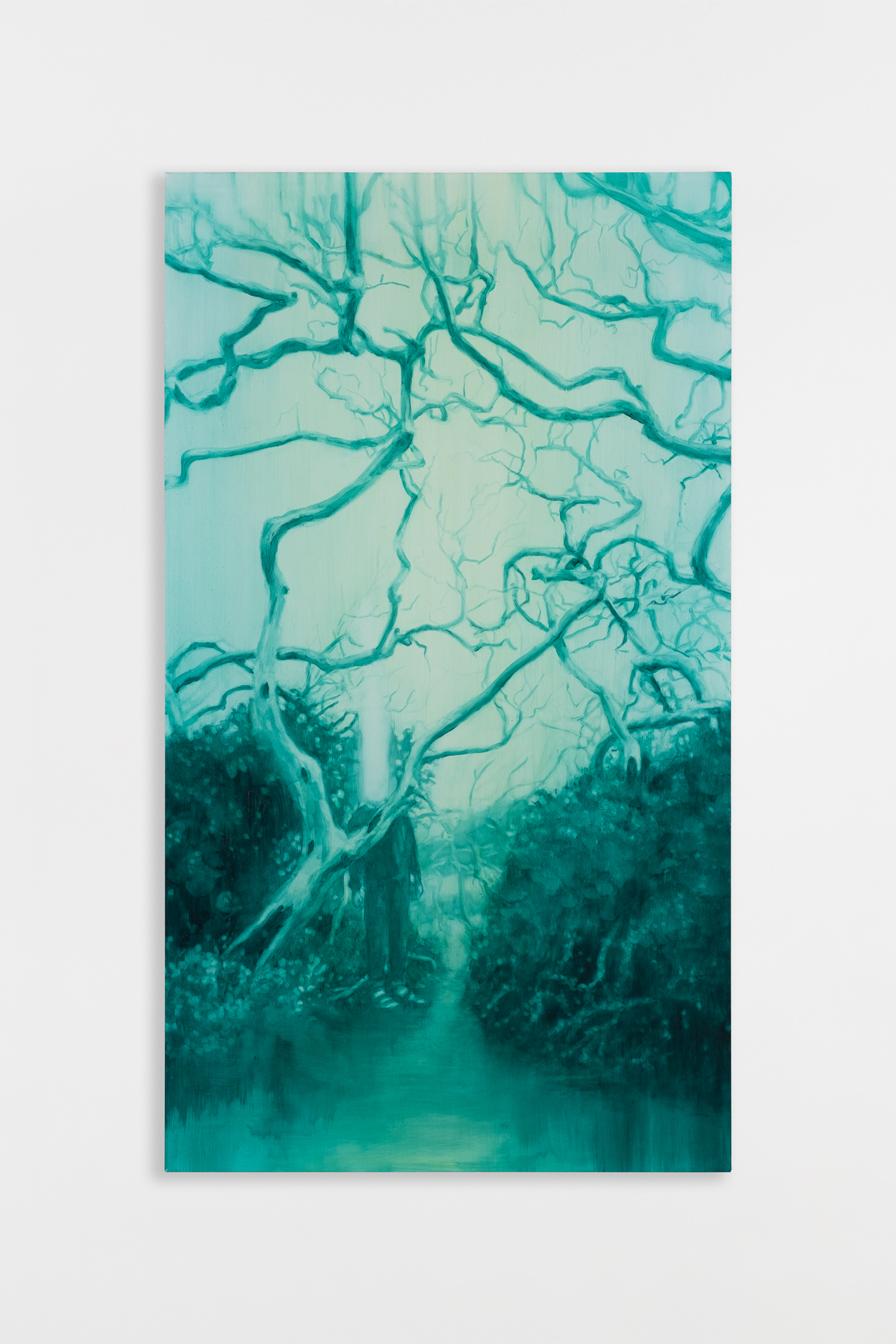

Open to the Sky, 2023. Oil on silk, 40 x 70 x 5 cm

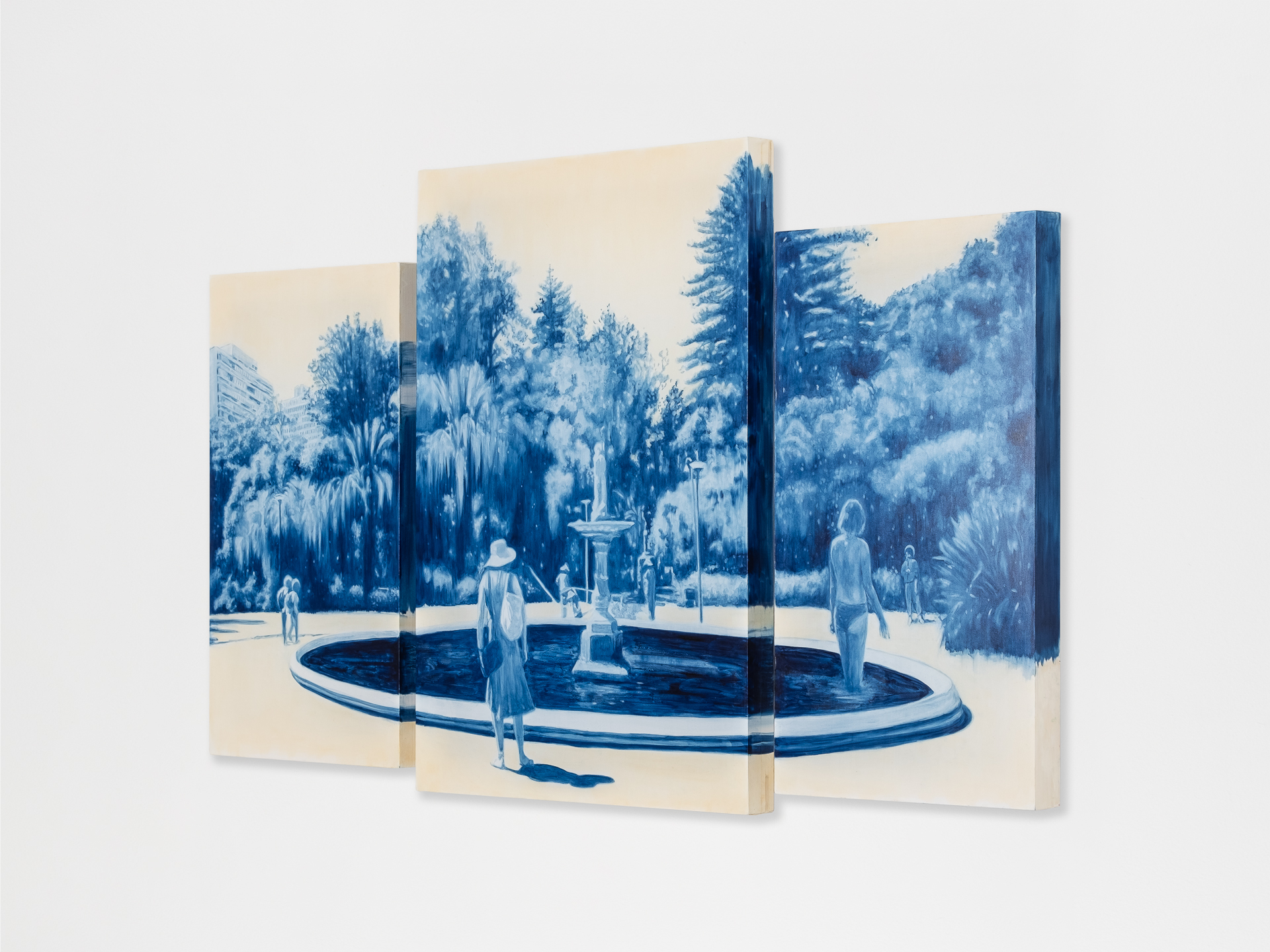



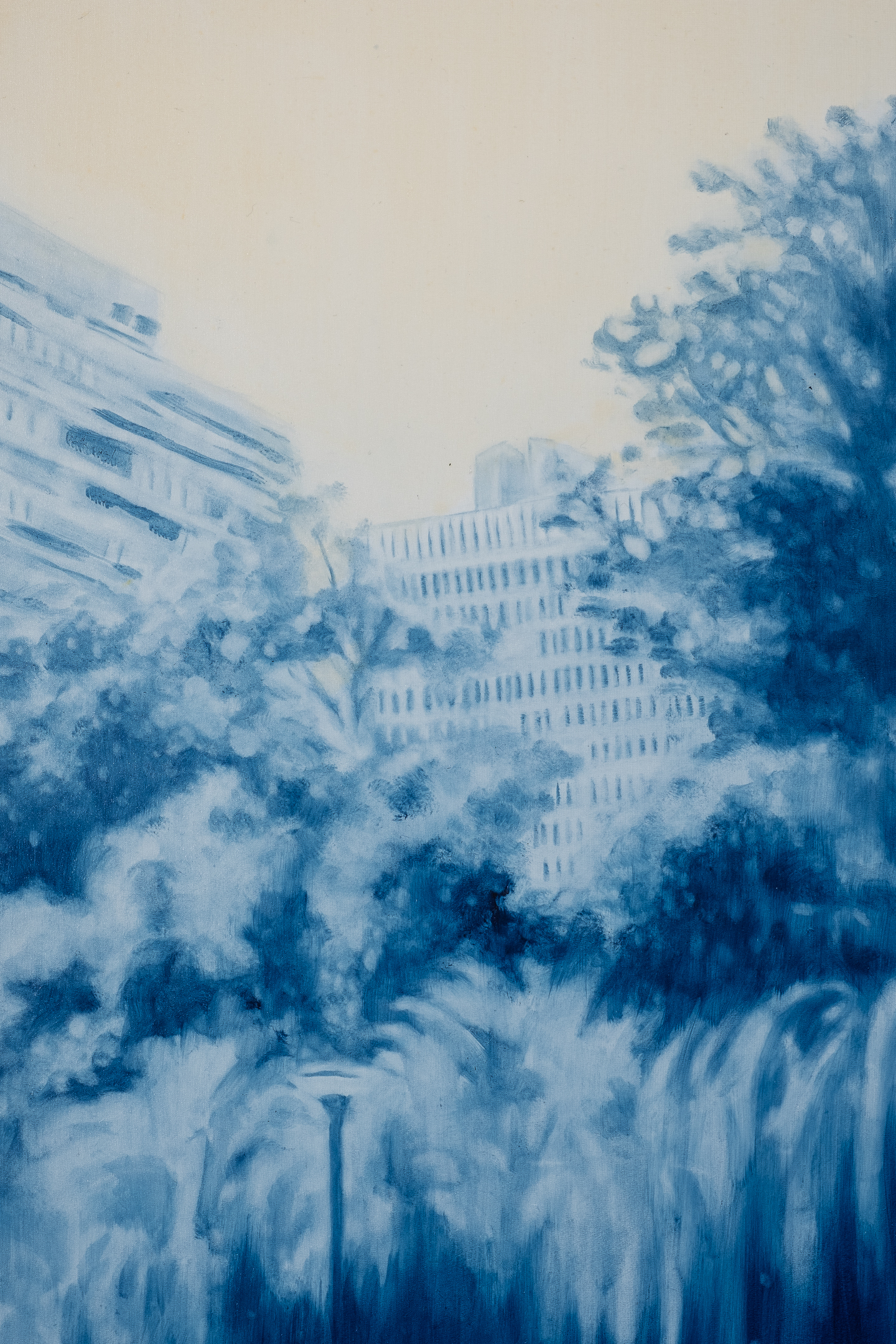

The Company's Garden, 2023. Oil on silk. 85 x 152 x 5 cm.



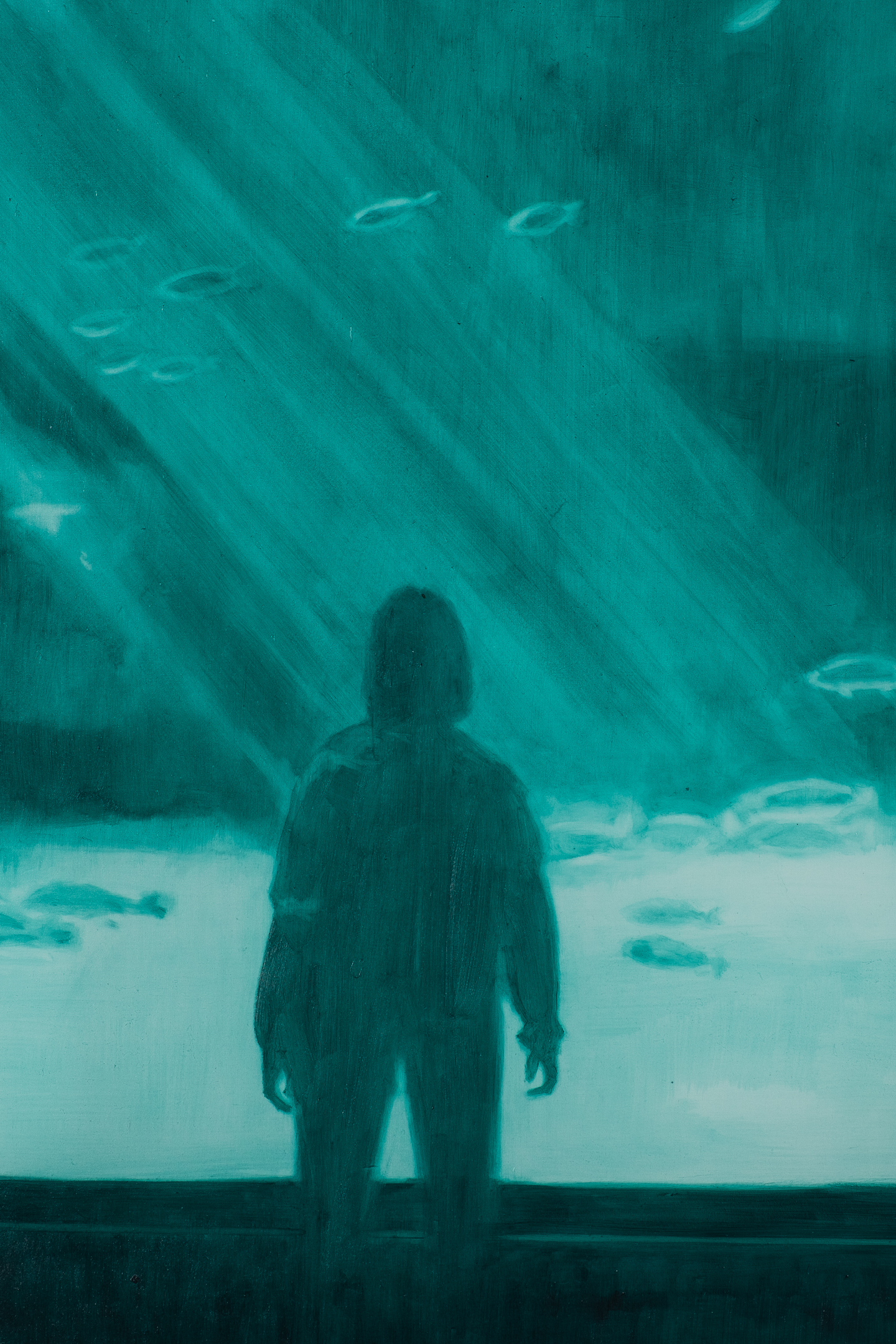
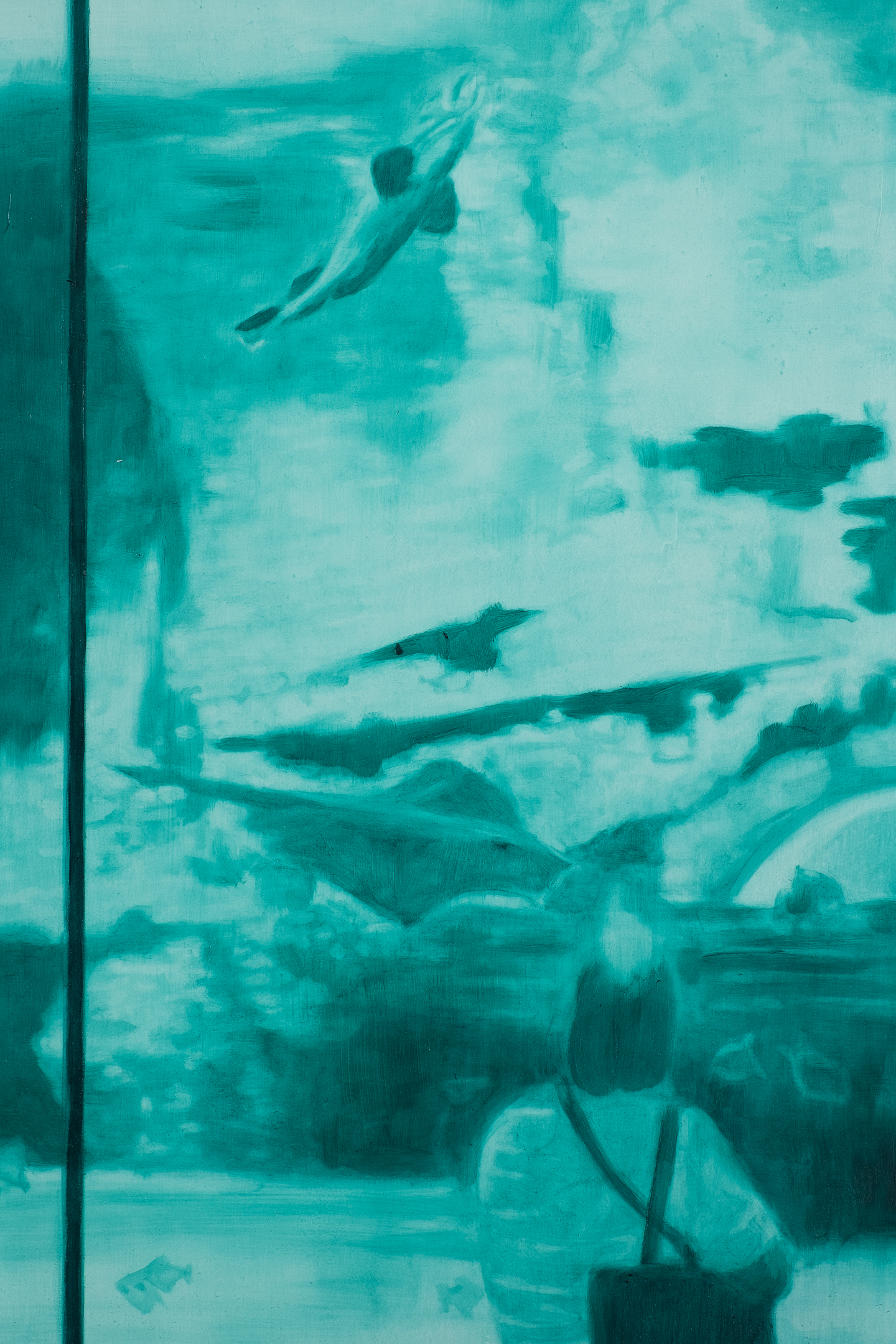
Two Oceans, 2023. Oil on silk. 80 x 70 x 5cm
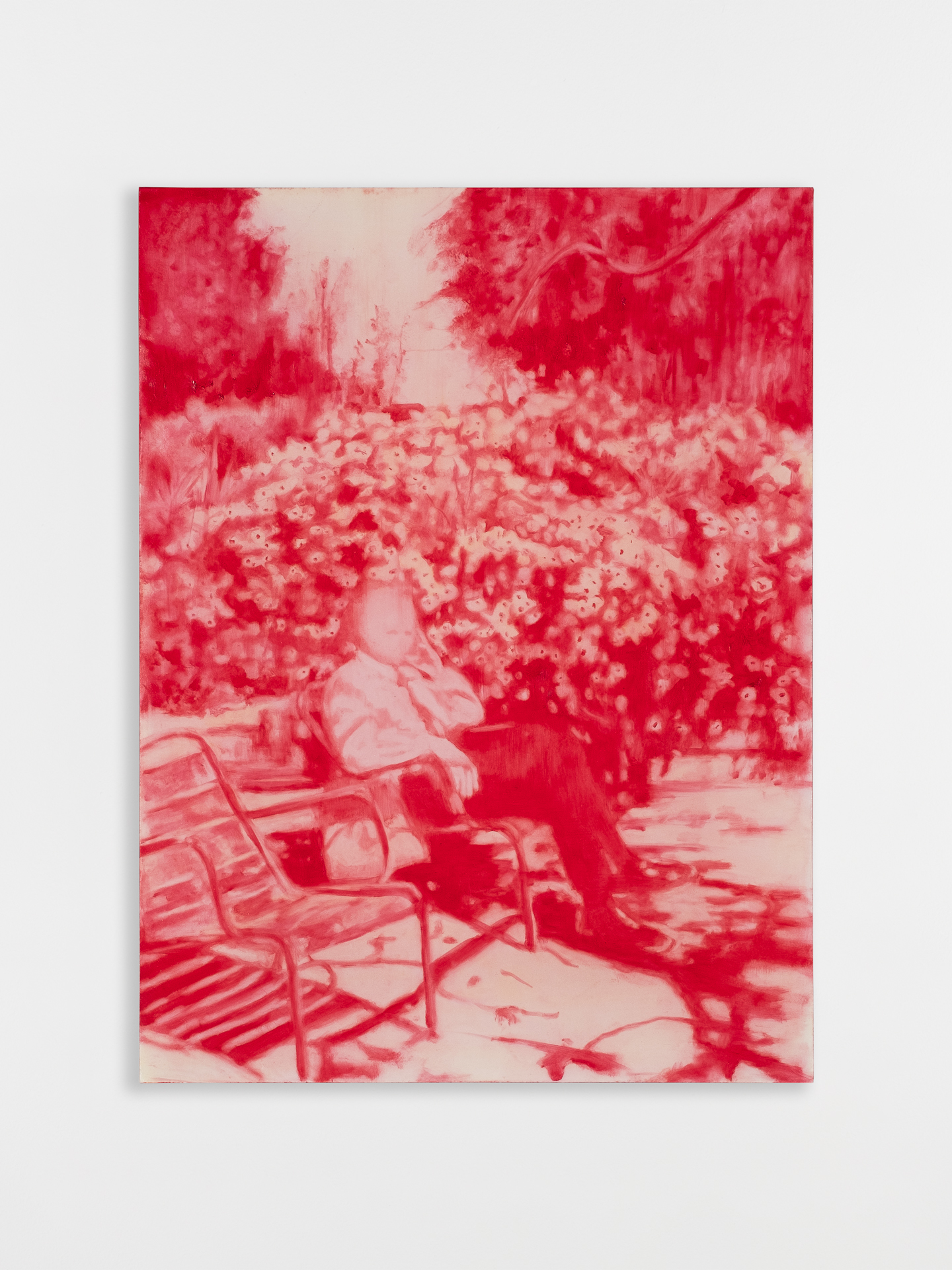
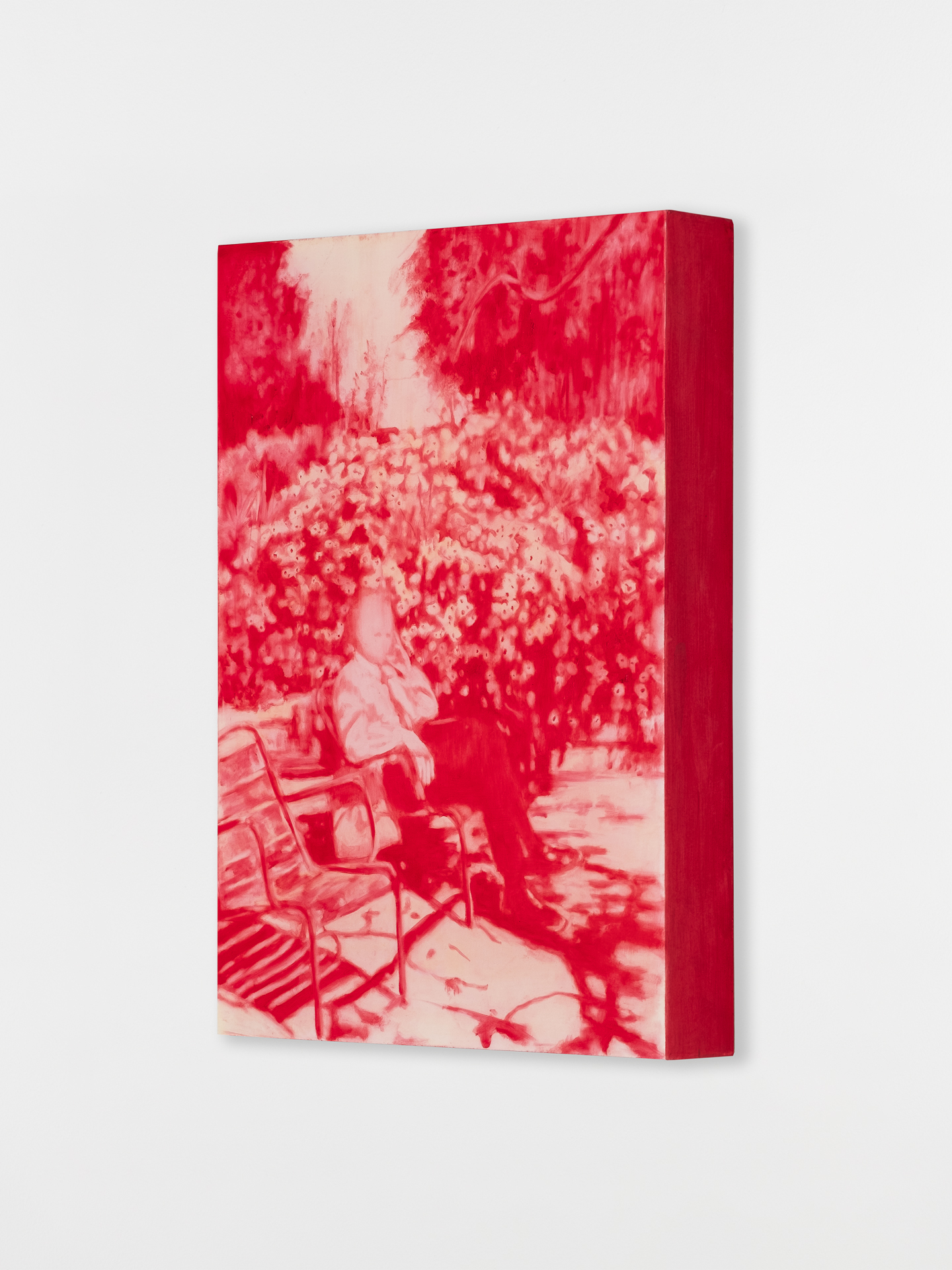
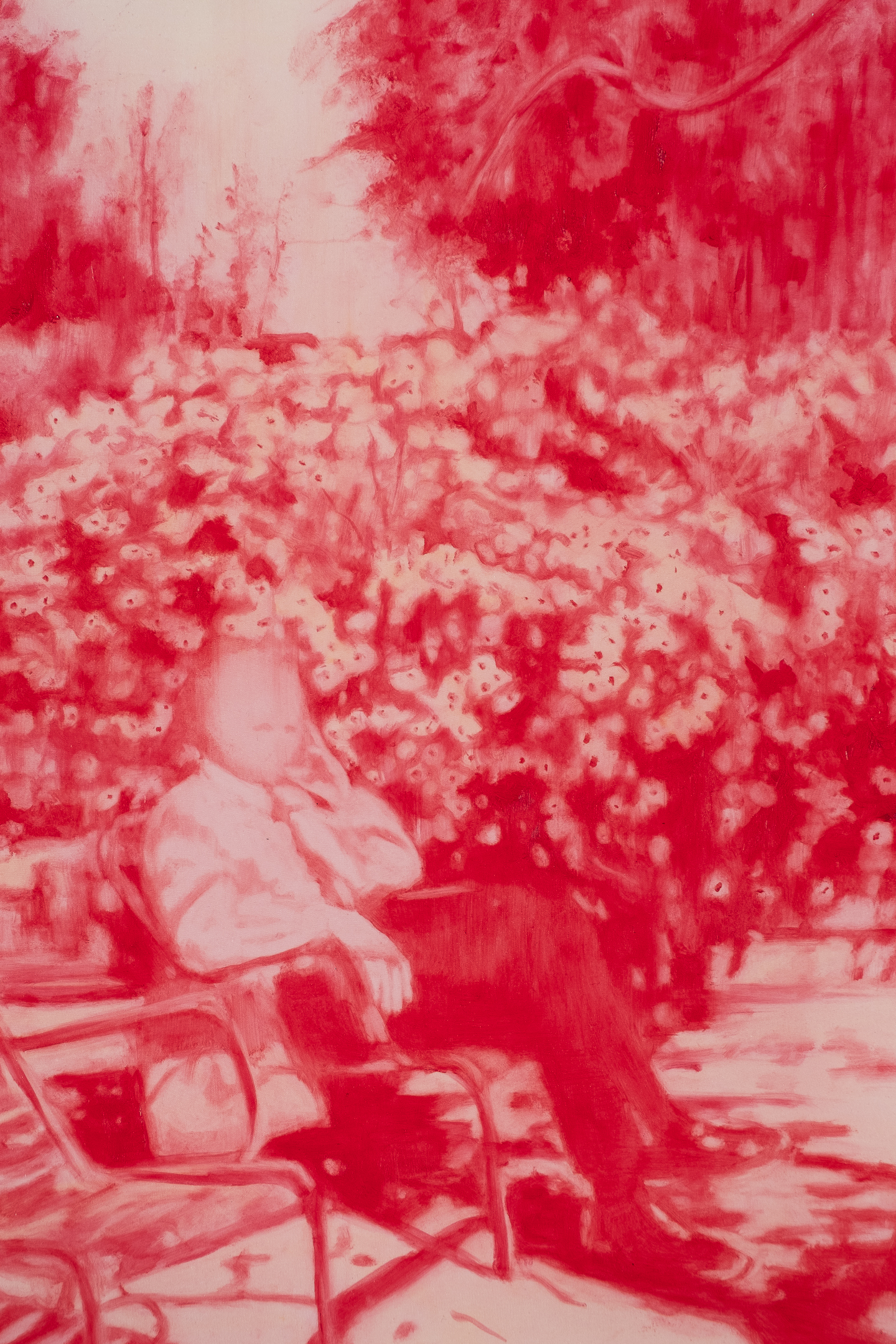
The Visitor, 2023. Oil on silk. 30 x 40 x 5 cm


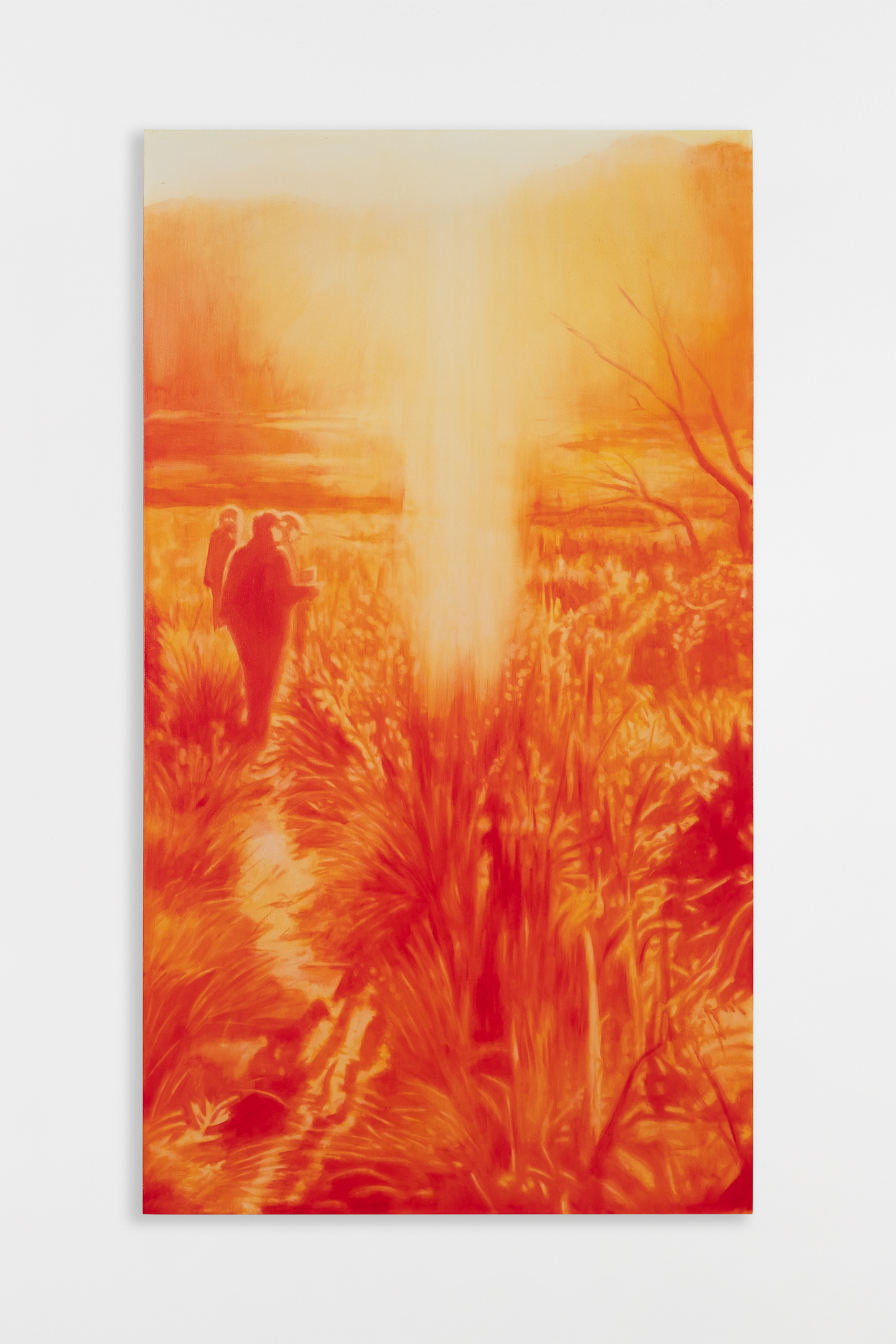




Ankle Deep Palmiet, 2023. Oil on silk. 80 x 146 x 5 cm.
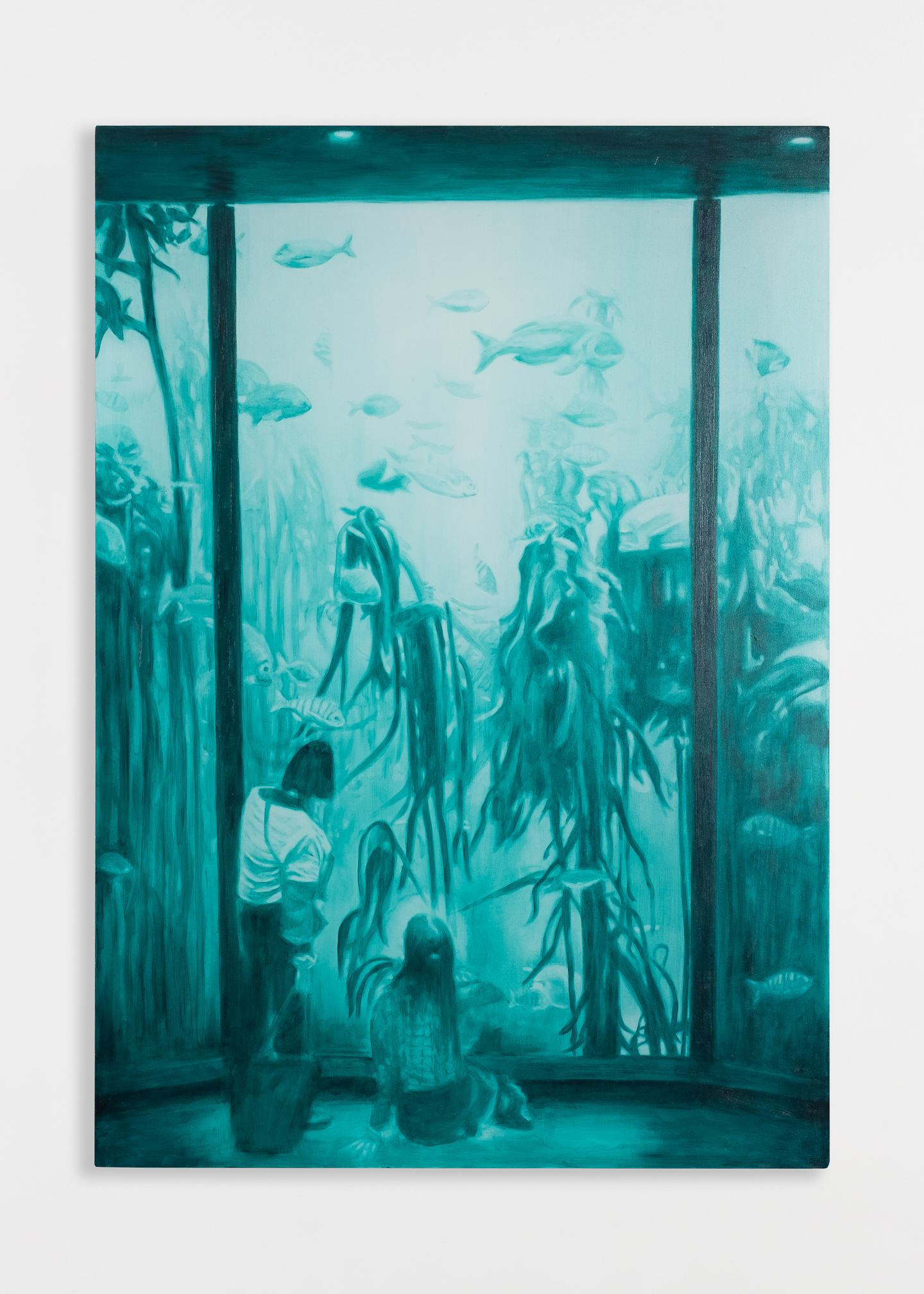
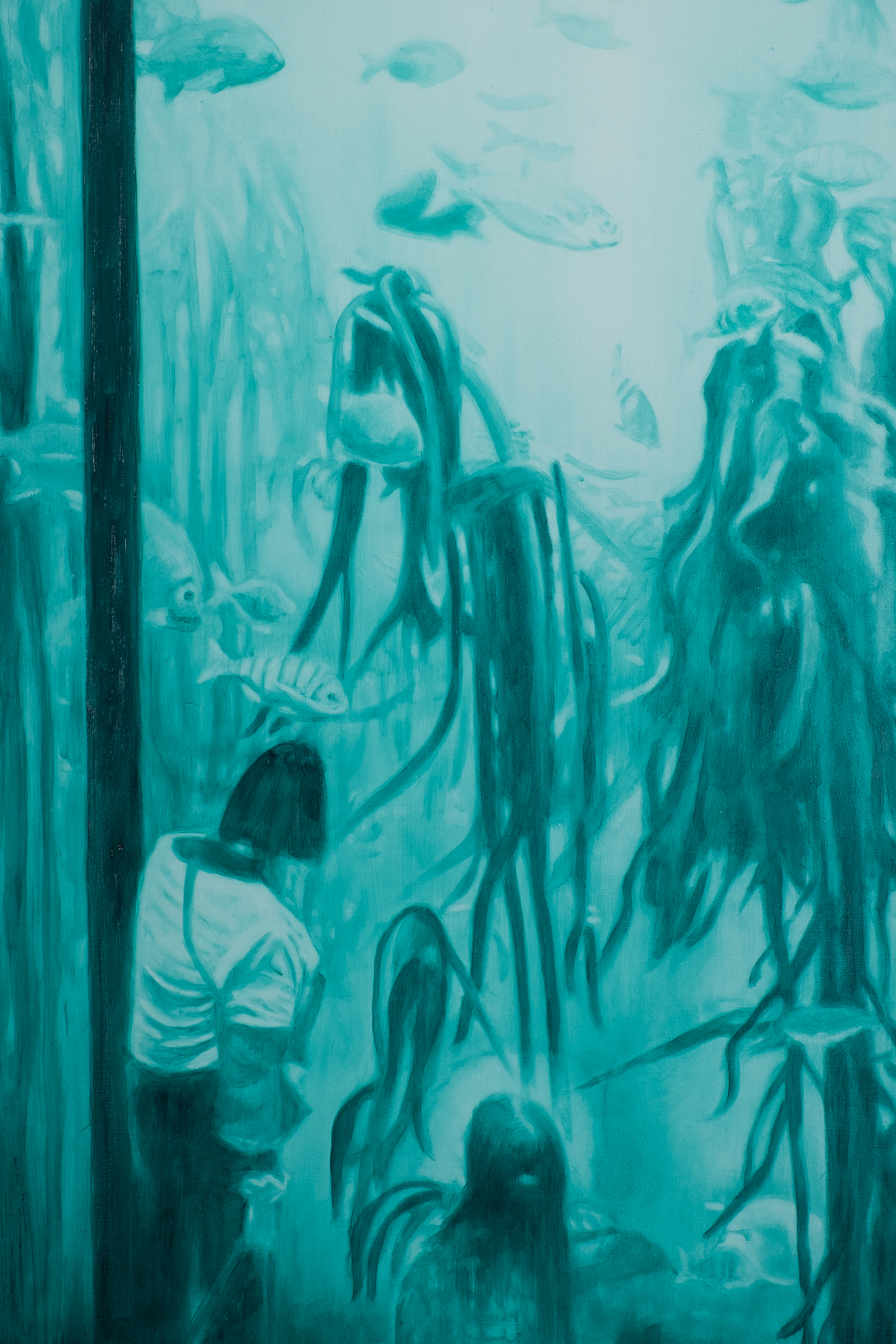
Forest, 2023. Oil on silk, 60 x 85 x 5cm
Photography by Matt Slater, courtesy of WHATIFTHEWORLD Gallery.